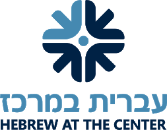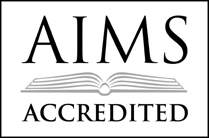Students Showcase Inventions, Inquiry Projects, and Prototypes at MILTON STEM Nights
February 22, 2018 by
MILTON students have been deeply engaged in hands-on STEM learning (Science, Technology, Engineering, and Math). At two recent STEM Nights, students in Grades 2-6 showcased their inventions, experiments, and prototypes – along with their research and reflections.
Sixth graders conducted their Independent Inquiry Projects, culminating in their presentation of their research, hypothesis, experiment methodology, observations, and general theories at STEM Night. The students began their Inquiry Projects with a unit on the Scientific Method. Each student identified a testable question that interested him or her and brainstormed an experiment that they could conduct to try to find an answer. Some questions the students explored are “What is the fastest way to cool a soda?”, “Does Shoe Size Matter or Affect Distance when Kicking a Soccer Ball?”, and “How do flowers behave in salt water vs. unsalted water?” Once they had formulated their questions and hypotheses, the students designed an experiment and conducted trials to test their hypotheses. Each student then recorded their data. The sixth graders reported the results of their experiments through a written narrative, documentation, and graphic presentations of their data. The last stage of their process was to formulate their conclusions and test their initial hypothesis in light of the experiment’s results. Each student kept track of their research process with a Google Doc that they shared with the teacher and became the basis for their final report. Finally, the students gave an oral presentation about their experiment in front of a panel of teachers (judges) and the fifth-grade students. They also presented their findings at STEM Night. Selected students will go on to present their projects at the DC STEM Fair!
Fifth graders put on an impressive Invention Convention! The goal of the project was for the students to build a mechanical invention that solves an everyday problem in a simple way. The students started by brainstorming a relevant everyday problem, looking for something that they encounter in their lives and would like to solve. As the fifth graders progressed through the next stages of the design cycle, they often had to go back to the drawing board to edit, revise, and rethink their ideas. In class, the fifth graders did a lot of work in order to understand and practice design and engineering principles. They researched simple machines and learned the basics of physics and mechanics rules. The students put all their knowledge together to build their inventions at home.
When the students finished building their inventions, they conducted market research to find out who might be interested in buying their inventions and how to advertise them. Each inventor designed a questionnaire and surveyed people at school or home. They then learned to use Google Spreadsheets to graph their data. The information they learned from the market research survey helped them to design a print advertisement for their invention.
At STEM Night, the fifth graders presented their inventions and their problem-solving process on tri-fold boards. This helped them communicate the results and conclusions of their market research and advertisement. In addition, the fifth graders gave a formal presentation to the fourth graders to explain and demonstrate their inventions, in order to give the fifth graders an opportunity to practice a professional scientific presentation, and to introduce the fourth graders to the Invention Convention process.
Fourth graders became engineers and cultivated STEM skills in both Science class and in their General Studies classes as part of their exploration of countries around the world. In Science class, they learned about earth’s geology, weather, and climate. Then in General Studies, they researched and worked in teams to design a home that addressed the environmental and climate needs of different countries. The homes they designed needed to give appropriate shelter and protection from the natural forces relevant to each country’s location, including considerations for areas prone to flooding, freezing, extreme heat, or earthquakes.
In Science class, the students tested the resistance of the model homes they designed to natural phenomena. The students used a special shaking table to simulate earthquakes, in order to test the resilience of different structures of houses, from solid and heavy to flexible and light. They also evaluated their structures under extreme weather conditions such as strong winds and floods.
At STEM Night, the fourth-grade presentations included exhibits of their home prototypes, drafts of their designs, and written narratives that reflected their research and process.
Third graders showcased their research, science, math, engineering, social studies, writing, presentation, and Design Thinking skills at STEM Night. The students have been learning about Native Americans in their General Studies and Science classes. After visiting the National Museum of the American Indian and following a field trip to the Brookside Nature Center, they began their own research about the Native American homes and villages. Through research, they developed a deeper understanding of the relationship of Native Americans to their surroundings and each tribe’s way of life and needs. Their research included learning about the natural materials and tools that were used to construct the different houses. The students also applied their math and engineering skills (they used math to plan and to keep accurate measurements and to determine scale) when designing models. They worked in teams to build models of homes of five different tribes, along with a village with all its functions – cultivating collaboration skills and Design Thinking skills throughout. Parents visiting the Grade 2-3 STEM Night learned how to create these homes for our knowledgeable student docents – and got an interactive lesson by having an opportunity to build models with the children.
Second graders became experts on our solar system. Whether you want to explore an asteroid belt, black holes, planets, moons, or stars – MILTON second graders can help! They studied the scientific principles of rotation, orbit and tilt, gravity and atmosphere; they researched space objects such as stars, moons, black holes, comets, asteroids, and meteoroids; and they learned about different tools we currently use to explore space such as telescopes, rockets, space stations, satellites, and probes. After their deep dive into the subject, second graders used Design thinking to select a destination, and design and build a tool to help them achieve their mission. Their depth of thinking is reflected in the detailed components they included in their space tool and their inclusion of how it would be powered. Even they constructed their prototypes, they continued to apply all the research and expertise they had developed on the destination, as well the needs of astronauts.
At STEM Night, second graders also shared poems they composed about the beauty of space and different space objects, inviting visitors to experience the topic and its splendor in addition to learning the facts. Read more about the second-grade space exploration.






